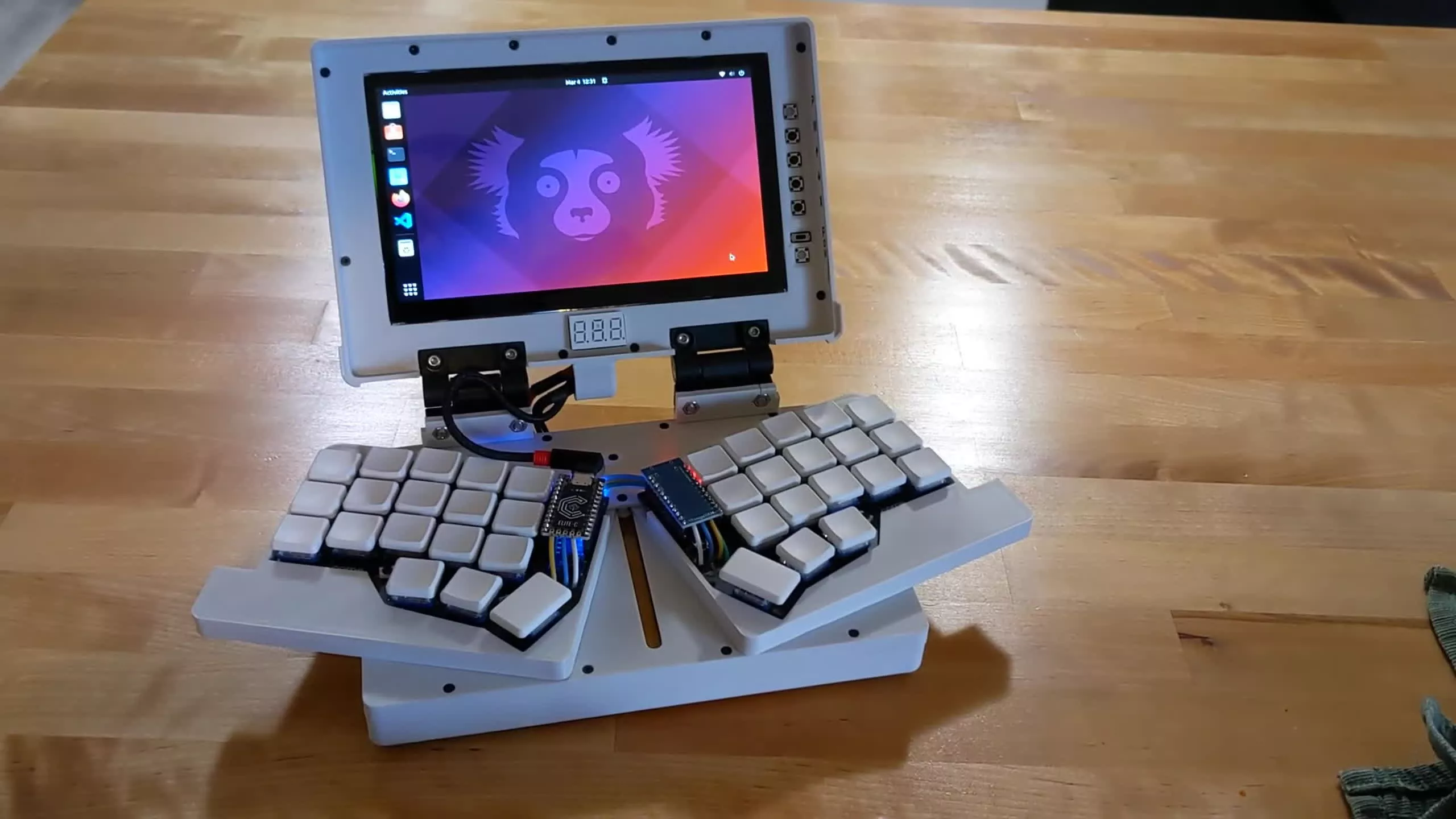In brief: There are a seemingly infinite number of uses for a Raspberry Pi. Engineers and ordinary tech enthusiasts have created comprehensive network ad blockers, retro gaming consoles, and personal media centers. We've also seen plenty of compact Pi-based PCs -- but this project, in particular, has caught our eye. Aptly dubbed the "Chonky Palmtop," it's a fold-out, laptop-like machine with an ergonomic keyboard and a thick footprint.
Feel free to take a look at the Palmtop -- created by Daniel Norris -- in the video above. The idea for the Palmtop came about when Norris was looking at the items he had on his desk (a 7-inch touchscreen, battery cells, and a Corne keyboard PCB) and realized they were actually rather close in size. He figured he could combine these components into one compact machine and that's precisely what he did.

The Palmtop has a 7-inch screen, a Raspberry Pi 4, and a Corne Classic keyboard. It comes with an Ethernet port, it charges via USB-C (with support for fast charging), and it has four USB ports: two are USB 3.0, and two are USB 2.0. It's not clear how long the Palmtop will run on a single charge, but even if it has to remain plugged in for the most part, it seems like a useful machine.
Thanks to the Palmtop's open-source nature, you can find out how useful it is for yourself. Norris has published general instructions, a list of necessary materials and components, and STL files you can use for 3D printing various pieces over on Gitlab. It's not a project for a beginner, but more experienced Pi users might find it achievable if they can fill in some of the blanks in the Palmtop's design instructions.
The device isn't perfect, of course. Norris has a few other bugs to squash and features to improve or add, but it's more than functional enough for general use even now. That said, Norris is working on fixing the Palmtop's mysteriously-borked Firefox graphics acceleration and reworking the "lower left hinge bracket" to match the lid.
Found is a TechSpot feature where we share clever, funny or otherwise interesting stuff from around the web.
https://www.techspot.com/news/94433-pi-based-chonky-palmtop-laptop-like-pc-fold.html